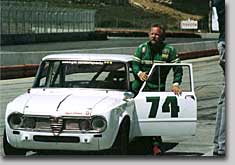 |  |  July 2004 Tech Q & A
Do you have a maintenance issue that has you stumped? Are you considering some performance modifications, but would like some advice on what combinations will work best on your car? AlfaCentro's Technical Correspondence section is the place for you! Click Here for Past Tech Q& A Columns  Click Here to submit a question to us online. Click Here to submit a question to us online.
Due to the volume of letters we receive, AlfaCentro is not able to respond to all technical correspondence. Published letters will be edited for length and clarity.
| 
Technical Editor Rex Chalmers brings over 30 years of experience as an Alfa Specialist to this column. You can contact Rex at the address below: 
Alfa Sport | N2001 Rolling Drive
Campbellsport, WI 53010 | 920.533.4505
www.AlfaRex.com | |  | | |